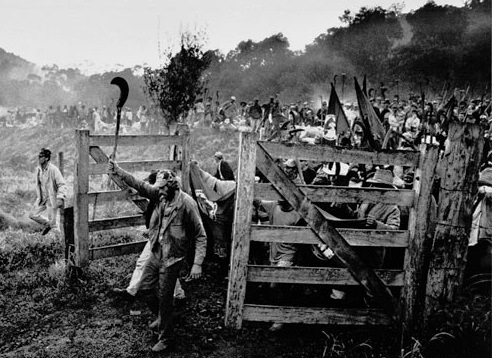
The last 15 years have seen many lasting progressive changes in South America thanks to leftist presidents and social movements. It’s been clear for a while, however, that in many cases so-called progressive governments have taken on some of the neoliberal and right-wing characteristics of their oligarchic predecessors. Aside from the enormous gains of this era, the region is clearly at a crossroads. Various governments claim to be the sole agents of change on the left while repressing indigenous movements and popular sectors, and curtailing spaces for reflection and open dissent. China is in many ways a new empire in South America, and the drop in oil and raw material prices spells more difficulty for governments powered by extractivist economies. What is the road ahead, without ceding more space to the right or bowing to Washington? One answer lies, as it did 15 years ago, in the imperfect proposals from the streets, the anti-capitalist vision of the popular movements, the landless peasants’ calls for real agrarian reform, the indigenous movements’ alternatives to extractivism, and the left’s historic anti-imperialism and anti-militarism. Silencing and criminalizing these progressive voices outside the halls of power strengthens the right and weakens the debate that’s needed to get out of today’s labyrinth.
Recent analysis on this topic:
Latin America: Where We’re At, by Oscar Ugarteche
Termina la era de las promesas andinas, por Maristella Svampa
Taking stock of ‘Progresismo’ in Latin America, by Raúl Zibechi
The Latin American Left Moves Rightward, by Immanuel Wallerstein
Benjamin Dangl is an editor at UpsideDownWorld.org, and the author of Dancing with Dynamite: Social Movements and States in Latin America, (AK Press, 2010).
